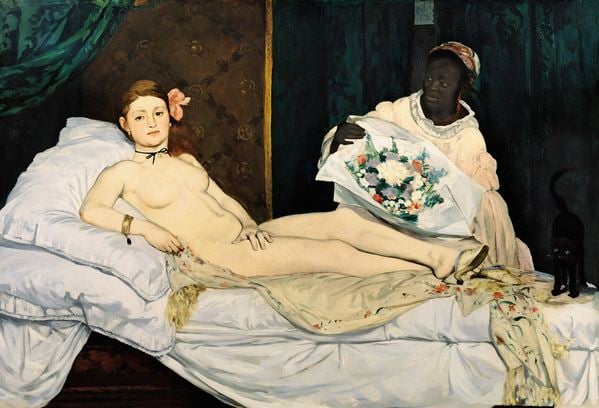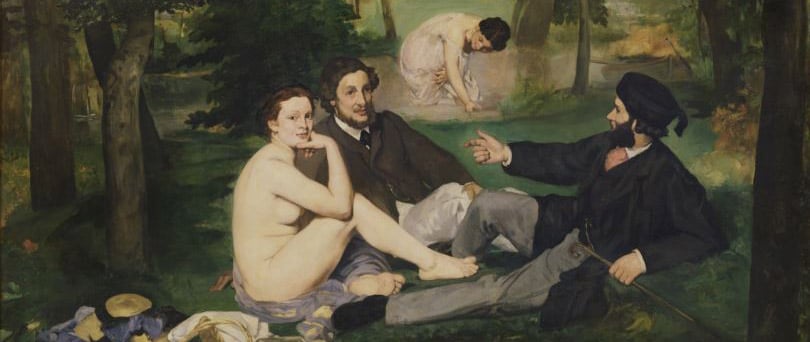
Art History’s Most Daring Nude Artworks and Painters
Nude artworks have been a popular subject throughout art history, yet most remained in their era’s realms of normalcy. Here are some of the painters that ventured to push the boundaries of what was considered appropriate or aesthetically pleasing for display, confronting themes of sexuality, idealistic body portrayals and femininity.
Lucian Freud: Flesh and more flesh
The grandson of Sigmund Freud, Lucian Freud painted truly intimate, revealing portraits that cast a raw light onto the human form, exposing flesh in all of its marbled, awkward detail. They are refreshing and yet often deliberately confrontational and uncomfortable images because the viewer feels so present in the subject’s personal space. Legs out-stretched and in ungainly poses, these models have no holds barred.
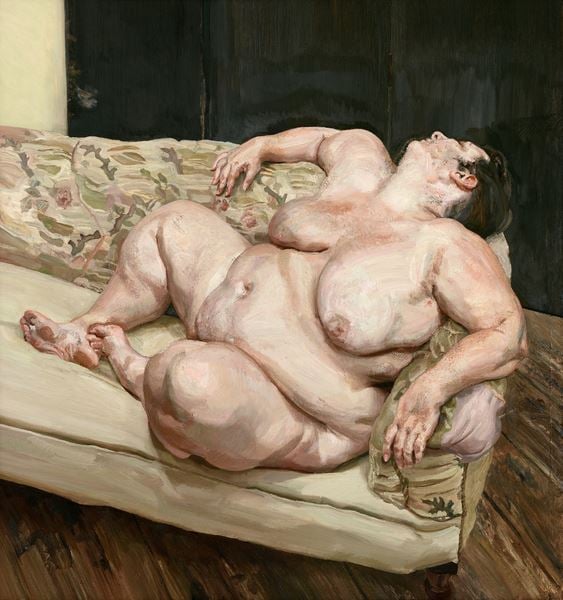
Benefits Supervisor Resting, 1994 (oil on canvas), Lucian Freud / Private Collection / © The Lucian Freud Archive / Bridgeman Images
Freud had deep connections with his models, often making them sit for a year or more for a single portrait. In this portrait of Sue Tilly, who then weighed about 127kg, Freud abandons the classical desire for the idealised form to instead create a powerful work with an immediate and intense emotional impact. At present it is the most expensive Freud painting ever sold at auction (£35.8 million). From this benefits worker to supermodel Kate Moss, Freud was unbiased in his style, painting Moss in a similar stripped-down fashion and sans the aesthetic expectations that surround her.
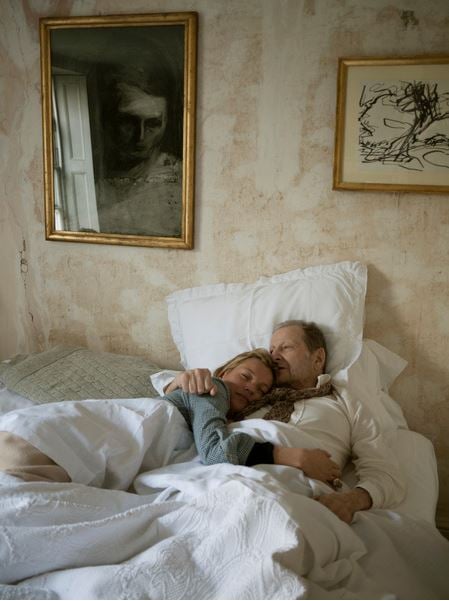
Lucian Freud and Kate Moss in Bed, 2010 (photo), David Dawson / Private Collection / Bridgeman Images
Gustav Courbet: Erotically charged and realist
A number of Courbet’s works were not permitted to be shown publicly until 1988, his erotic L’Origine du Monde and Le Sommeil in particular were said to cause great affrontation to the viewer. By the very nature of its realistic, graphic nudity, the former still has the power to shock and trigger censorship today.
The latter was commissioned by a Turkish diplomat and art collector of the late Ottoman era, but when it was exhibited in 1872, it became the subject of a police report. The painting had an extra dimension of daring since one of the models for the painting was Joanna Hiffernan, who was the mistress of fellow painter James Abbott Whistler at the time. Whistler’s relationship with Hiffernan ended soon afterwards, and his opinion of Courbet soured. Some even speculate that the model in L’Origine du Monde was also Hiffernan as she was the subject of several works by Courbet, though the disparity in hair colour suggests it may be more likely to be her brunette lover from Le Sommeil.
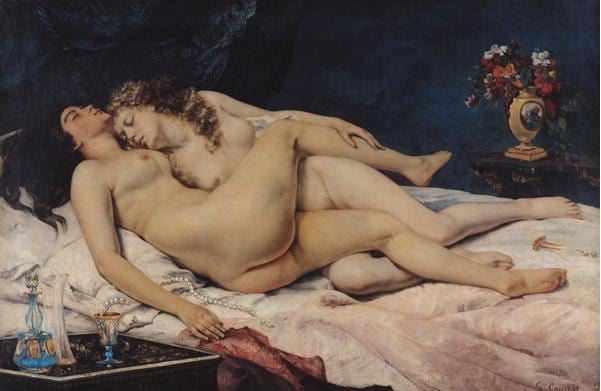
Le Sommeil, 1866 (oil on canvas), Gustave Courbet / Musee de la Ville de Paris, Musee du Petit-Palais, France / Bridgeman Images
Le Sommeil created an impact in 19th-century art as a number of contemporary artists were influenced by the theme of lesbian couples. Repetition of this theme helped to lower the taboos associated with lesbian relationships. Courbet’s nudes in general were also wholly different from the flawless Venuses that populated canvases in the 1800s, favouring non-idealised proportions and unkempt grooming. They championed an emphasis on reality that prompted the Impressionists to see past perfect illusionism… which contemporary publications are often still seeking to achieve today.
Amedeo Modigliani: Sculptural eroticism
Modigliani’s deep influences from African sculpture and Cubism are readily apparent in his painted nudes; one can practically feel the presence of the model. They are painted with the sensuous curves and gleaming skin typical of the Italian Renaissance, yet without any mythological or allegorical context, thus embedding them in unashamed eroticism. The characters of these female figures shine through the paintings – confident, demure and everything in between. Reclining Nude‘s eroticism is so palpable that when the painting was displayed in Paris in 1917, the gallery was closed down by a police commissioner due to obscenity – he objected to the inclusion of, the horror of horrors, pubic hair.
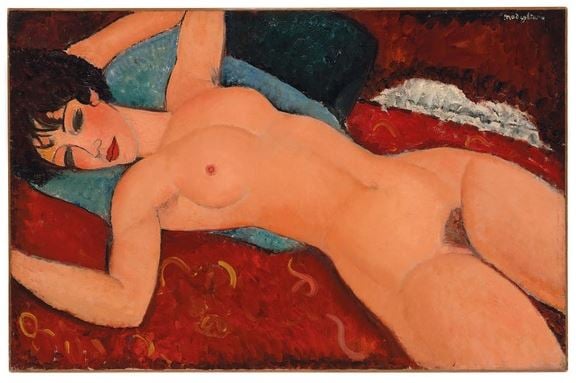
Reclining nude, 1917-18 (oil on canvas), Amedeo Modigliani / Private Collection / Photo © Christie’s Images / Bridgeman Images
To mark the centenary of this incident, the Tate Modern recently showcased the largest group of Modigliani’s nudes that have ever been shown together in the UK. The curator commented, ‘although it’s not feminism as we might recognise it today, I think it is actually quite interesting to think of these people as women making a choice’. The modelling was lucrative work, with the women paid twice as much as they would get by working in a factory. It was a time where women’s history was changing; the works were created during the first world war when most men were away fighting and so women were given more work opportunities, more independence and more focus on themselves as individuals out of the shadow of wifely duties. Modigliani’s women are erotic subjects in control of their own sexuality, ‘new women’ who chose their hair and make-up and were interested in engaging with the male gaze, on their own terms.
Egon Schiele: Figurative and perceptual distortions
There existed no taboo or constraint for Schiele. The artist’s tortured, passionate works on paper directly communicate the link between sex and death, pleasure and pain. His unflinching twisted lines rejected academic styles and created crooked figures that seem almost disfigured, but still deeply mesmerising and sensuous. They differ greatly from the warmth and welcome of Modigliani’s images, yet they are likewise deemed as a form of radical, artful pornography.
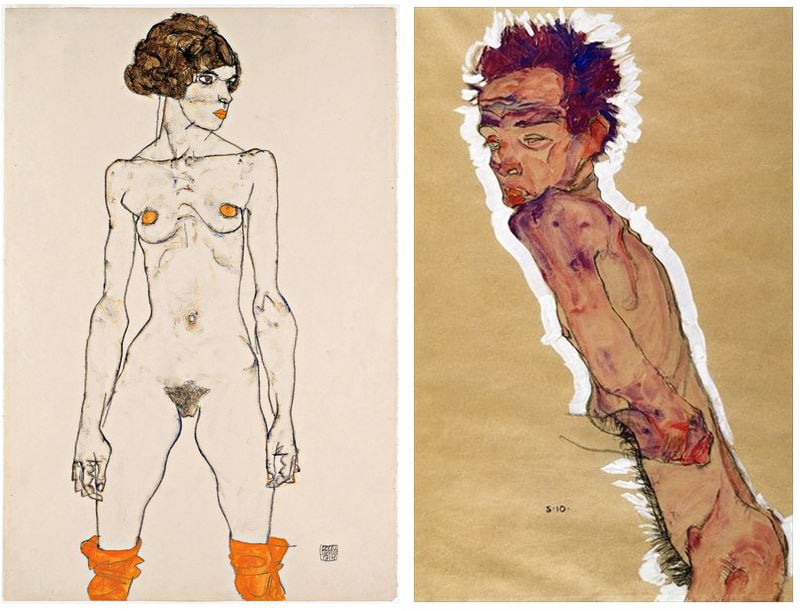
Left: Standing Young Female Nude with Orange Coloured Stockings, 1914, Egon Schiele / PVDE; right: Self Portrait Nude, 1910, Egon Schiele / Graphische Sammlung Albertina, Vienna, Austria / Bridgeman Images
The majority of his nudes, particularly in the first part of his artistic career, were disturbingly emaciated and withered; as one of his supporters put it in a review of 1912, they resemble ‘vampires starved of their grisly sustenance: faces that shimmer with the livid colours of putrefaction, and the death beneath the skin’. The figures were contorted and distorted, with elongations, deformities and strong sexual overtones. From 1915, the year that Schiele married, the female nudes became fuller in figure, but many were deliberately illustrated with a lifeless doll-like appearance. His drawings are imbued with melancholy, loneliness and a sense of abandonment.
However although his depictions of women may seem grotesque or unfavourable, they reflected only his adoration for them. Schiele is a feminist who puts women at the centre of art. Rather than the passive sidelong reclining position that many male artists choose to depict women, his nudes sit up or stretch out with direct, immodest poses. He presents bodies intertwined in the act of love in numerous occasions, and pairs of the same gender which he provocatively titled Friendship. Despite his compromising subject matters or depictions, Schiele maintained, ‘they are always works of art’.
Edouard Manet: Confrontational women
As shown by Schiele and Modigliani’s examples, contemporary audiences were not accustomed to women being confident of their sexual power or unashamed of their bodies. Several other artworks have sparked public notoriety and controversy over the years simply because the female subject dared to confront the viewer. These include Manet’s Olympia, an artwork that is modelled after Titian‘s Venus of Urbino. A key difference is that her left hand appears to block her groin rather than be invitational, which has been interpreted as symbolic of her sexual independence from men and her role as a prostitute, granting or restricting access to her body in return for payment. There are various other details that allude to her prostitution and caused shock among viewers; conservatives condemned the work as ‘immoral’ and ‘vulgar’. Olympia’s gaze is often referenced as the pinnacle of defiance toward patriarchy.
The work caused even more outrage than Manet’s Dejeuner Sur l’Herbe, which affronted people’s sense of propriety as it depicts a naked woman and bather positioned among fully-clothed men. Even more astonishing is the lack of interaction between the men and women in the painting, who seem to be unmindful of each other. The woman in the forefront appears to be focused on the viewer but at the same time it is indeterminable whether she is challenging or accepting them, engaging them, or even looking past them. It provokes questions as to the viewer’s relationship with her and makes the viewer’s gaze a subject in itself.
Find out More
Get in touch at uksales@bridgemanimages.com for more information on licensing and copyright

